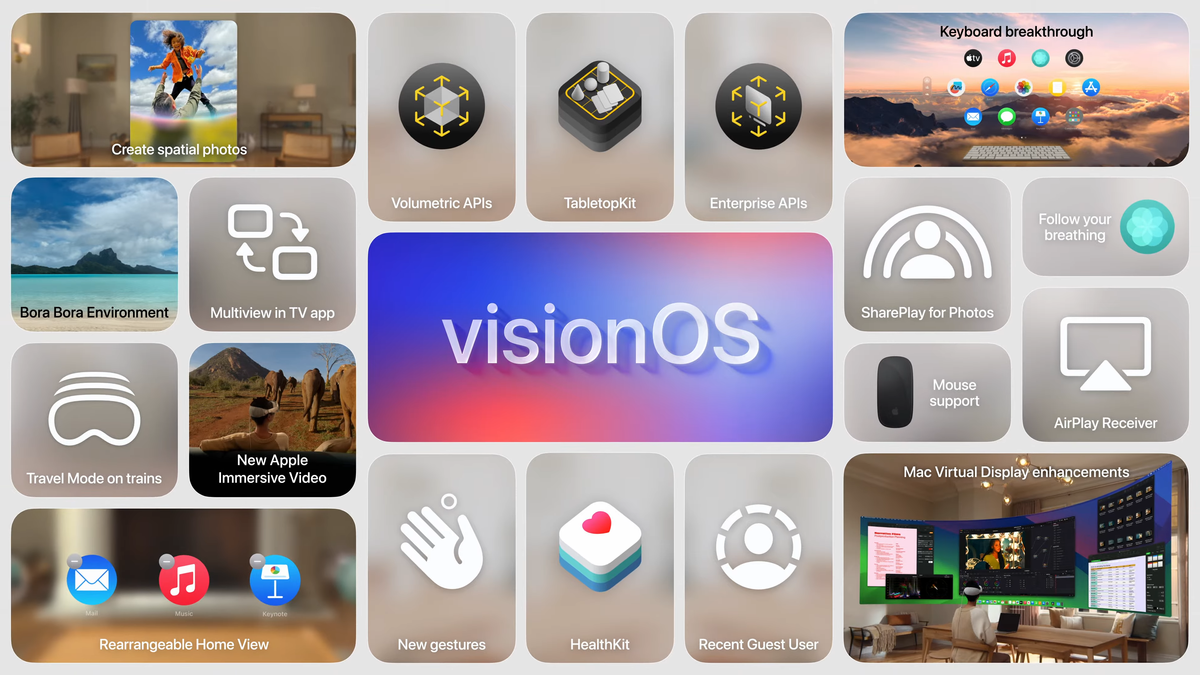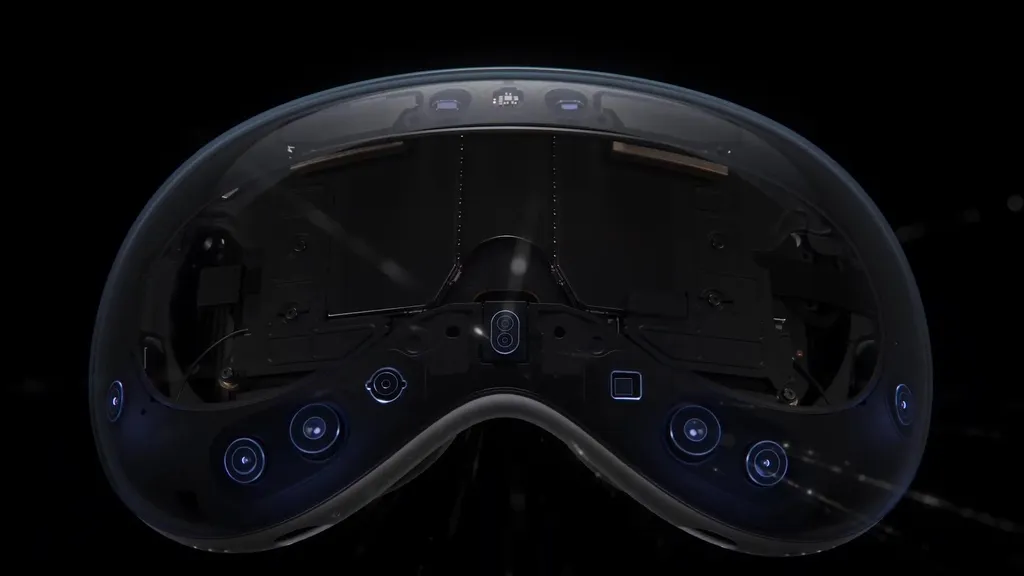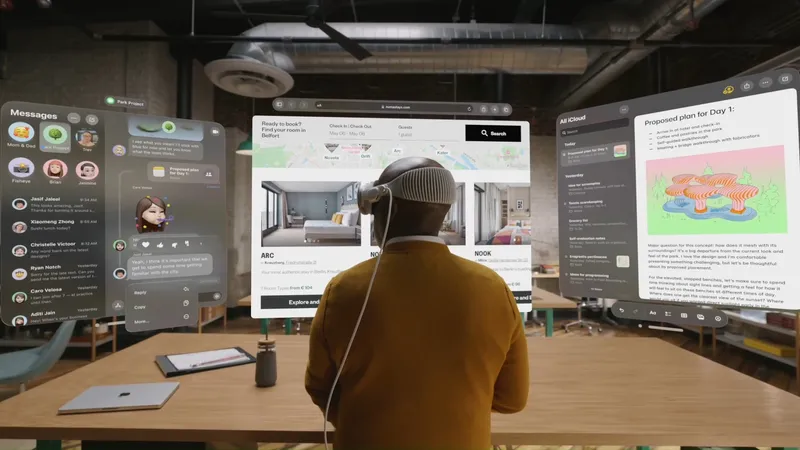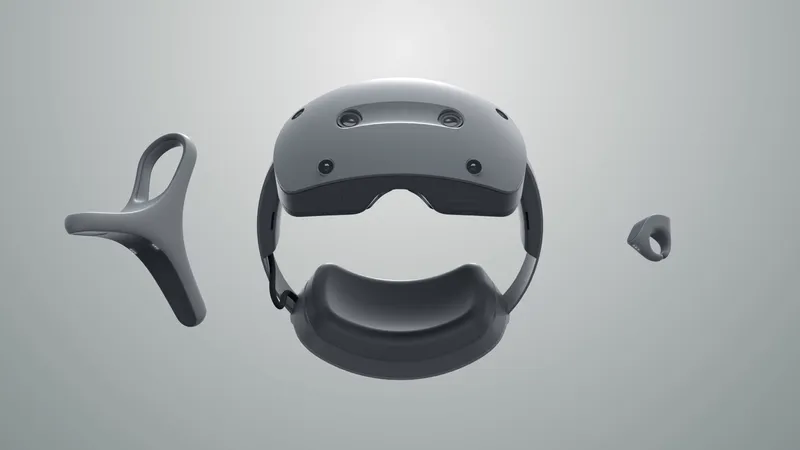In visionOS 2, Apple will give enterprise companies raw access to Vision Pro's passthrough cameras for non-public internal apps.
While mixed reality headsets like Apple Vision Pro and Meta Quest 3 use cameras to let you see the real world, only the system and certain first-party apps actually get raw access to the cameras.
Third-party developers can use camera passthrough as a background, but their apps don't get to actually see this passthrough. They only get higher-level data, such as hand and body skeletal coordinates, a 3D mesh of your environment with bounding boxes for furniture, and certain object tracking capabilities.
If iPad apps try to access the selfie camera on Vision Pro they get a virtual webcam view of you as a Persona, Apple's name for its realistic face-tracked avatars. For the rear camera though, visionOS returns a black feed with a "no camera" icon in the center.

Today at WWDC Apple announced Enterprise APIs for visionOS 2, which will give businesses access to advanced features not available in consumer apps. These Enterprise APIs include:
- Main camera access
- Passthrough in-screen capture
- Apple Neural Engine access
- Barcode and QR code scanning
- Object tracking parameter adjustment
- Increased performance headroom
Apple makes clear that these features can only be used in apps "for use in a business setting only", and apps using them can only be distributed as proprietary in-house apps or custom apps made for a specific business using Apple Business Manager, not on the App Store. A managed entitlement is required, alongside a license file tied to your Apple developer account.
ByteDance also allows raw camera access on Pico 4 Enterprise, the higher-end variant of Pico 4 with eye and face tracking only available to registered businesses. Meta and HTC don't allow raw camera access for anyone, though HTC's Vive XR Elite has built-in ArUco fiducial marker tracking.































